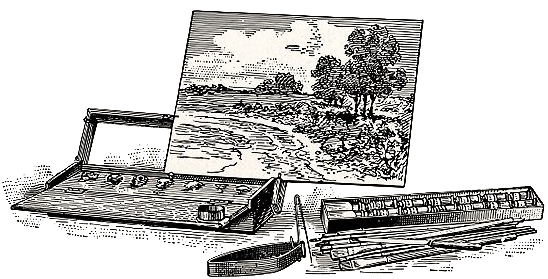Homer Watson House & Gallery
The Homer Watson House was built by Adam Ferrie, son of the Hon. Adam Ferrie Sr., an affluent industrialist from Scotland. This substantial house, in the vertical style of Gothic Scotland is very different from the Georgian style favoured by Mennonite settlers of the early 1800’s. Adam Ferrie began construction of the house in 1834, the year he bought the land from John Biehn Jr. From its grandeur he had every intention of staying in Doon. Certainly there was nothing like this house in the area. In 1847, however, Adam was asked by his father to step down in place of his brother, and Robert Strang, a “Clerk of Canada”, moved into the house. In 1873, Jane Ewing bought the house from the Ferrie estate, and sold it to Henry Drake.
Homer Watson had long admired the Ferrie house for its architecture and light. In the autumn of 1881 Watson moved into the house with his wife Roxanna, renting the third floor. The previous year Watson had achieved artistic success when Lord Lorne, the Governor General of Canada, had purchased his painting the “Pioneer Mill” for Queen Victoria, for the sum of $300. In 1882 the Queen requested another of Watson’s works, “The Last of the Drought” and Lord Lorne also arranged to buy “The Torrent”. Watson now had confidence in his artistic career and the financial means necessary to purchase his dream home.
In 1883 Watson secured the Ferrie house and the two and three quarters acres upon which it was situated. The house would remain Watson’s home for the remainder of his life. By 1893 the painter had added a studio, which featured a frieze displaying the names of the artists he most admired and included a small painting in each artist’s style. The year 1906 saw more changes to the house, when a gallery, designed with classical “harmonic proportions”, was added to display Watson’s art. The gallery was intended to show Watson’s works to the many patrons who visited his studio. Clerestory windows allowed natural light to enter the gallery while providing as much wall space as possible to hang his paintings.
Watson continued to work in the house until his death on May 30, 1936. His sister, Phoebe, remained in the house until her death in 1947. The following year the estate was sold to Ross and Bess Hamilton. In 1948 the Hamiltons established the Doon School of Fine Arts. Instructors at the School included such notables as Fred Varley of the Group of Seven. The Doon School operated until 1966. The last private owners of the Watson house were Earl Putnam and Tom and Ruthe Cayley. In 1981 the City of Kitchener purchased the historic house for the enjoyment of the art loving public. The Homer Watson house continues to this day to be a creative domain for artists.

